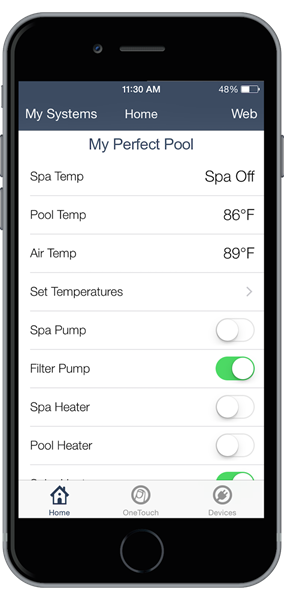5 Ways to Improve Pool and Spa Efficiency
May 06, 2020 at 09:00 AM

Faced with rising energy costs, and growing environmental concerns, pool and spa owners demand better operational efficiency than ever before.
Here are 5 suggestions to keep your pool and spa running at peak efficiency.
- Variable-speed pumps. Just switching from a traditional single-speed pump to a variable-speed pump has been shown to easily cut energy use up to 50 percent — and in some cases up to 90 percent. Reducing pump speed/RPM of 3,450 by 600 RPM to 800 RPM is a simple way to cut energy consumption by 50 percent, but still typically provide enough flow to operate the swimming pool properly. And as an added bonus, many utilities offer rebates for switching to variable-speed pumps. In some cases there can be a significant cost difference between running the swimming pool during peak vs. nonpeak hours.
Run the pump during the day at low RPM and at higher RPM to clean the pool during off-peak hours.
- Pool Automation Systems. Whether you’re using a single-speed, or variable-speed pump, there are two key reasons automation saves money. First, you don’t need to run a pump 24 hours a day to turn over the pool or spa. In many cases, turnover can be accomplished in shorter time frames controlled through automation. Second, automation gives you the ability to control the amount of power the pump actually uses. For example, running higher RPM cycles at night on a single-speed pump can produce 30 percent to 75 percent in savings.
It’s more efficient to run a variable-speed pump at a lower speed for a longer time frame than a higher speed over a shorter time frame. For example, instead of running the pump 6 hours a day at 100 gallons a minutes, it’s better to run it 12 hours a day at 50 gallons a minute. This is how you can start tracking major power savings.
Adjust the pump’s speed to the flow required to turn the pool over once a day, or what’s required to keep the pool clean and clear. Then only use higher speeds to operate in-floor, spa jets, solar and cleaning systems. Remember to run the pump as much as possible during off-peak hours to further reduce energy costs.
- High-Efficiency Gas Heaters. New pool and spa gas heaters are more efficient than ever. In fact, the Department of Energy has changed the thermal efficiency requirement to state that all gas heaters for residential swimming pool use need to be 82 percent thermal efficiency or above.
Check the current efficiency rating of your heater. If it’s an older style heater, more than likely a replacement could save on gas costs and heat the pool or spa quicker. An added benefit is that the newer heaters have much smaller footprints and require much less space when installing them.
- LED Lights. LED lights use less energy and have a longer life span than incandescent bulbs. Requiring less than 50 watts of power to operate versus the 300 watts required by incandescent bulbs, LED lights have been known to cut energy expenses by up to 90 percent.
- Automated Water Balance Readings. When your water is out of balance, potential costly problems can arise like algae blooms, which can stress your system and cost you precious time in your pool. Staying on top of your water chemistry can be time consuming though. Ideally, you would do a water check every hour to ensure that water is balanced and safe to swim in. A more efficient way to track your reading is with an automated device, like the Blueriiot™ Smart Water Analyzer. With this easy-to-use device, you never have to worry about your pool water being out of balance. The Blueriiot Smart Water Analyzer takes precise readings and automatically delivers real-time reports, along with chemical recommendations, right to an app on yours and your pool pro’s phone for round-the-clock watch over your water chemistry. This device works in any pool — above-ground, in-ground, spa, salt or otherwise — to provide constant vigilance with automated alerts so common pool problems associated with off-balance chemicals can be solved before they even begin.
Editor’s note: This post was originally published June 2017 and has been updated for accuracy and comprehensiveness.